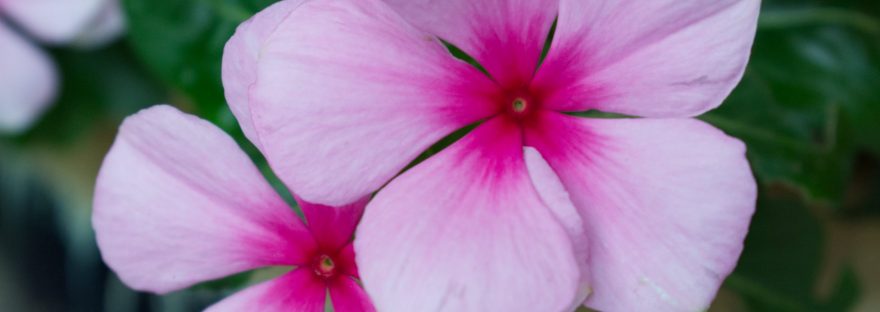All down the stone steps on either side were periwinkles in full flower…”
Elizabeth von Arnim, author, The Enchanted April
Vincas, or periwinkles, are my go-to flowers for container and border gardening. They begin blooming in the spring, and are really the most effortless, low-maintenance flower to grow.
Depending on your zone, they can be either perennial (returning year after year) or annual (grows one season). In my zone (7b), they’re considered annuals, but quite frankly, they’ve returned with a sweet stubbornness the following year at times, especially when planted in the ground.
Vincas, at least for my gardening needs, are hardy, versatile flowers. They grow well in sun to shade, moist soil to clay, ground to container.
The leaves on vincas are the most stunning as they are typically a rich green, shiny, oval leaf, which is why many use the flower as a ground cover under trees and along the border of the garden. The five-petaled flowers vary in color from white, to pink, to purple, to red, to lavender-blue (periwinkle). And as always, vincas come in several varieties.
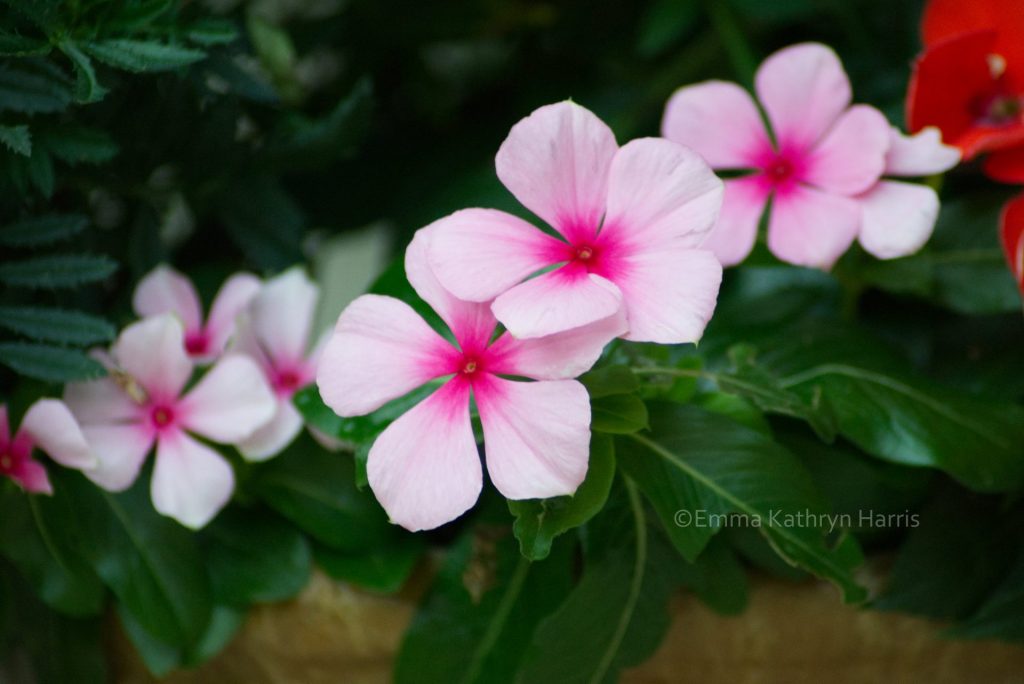
But there is something about these delicate beauties that turn me into a disgruntled beast when I can’t get my vinca seedlings. They not only give an elegant beauty to any yard or window box, but they spread gloriously through the season. I’ll plant four seedlings and end up with double by fall. They grow anywhere from 10 to 18 inches tall and last spring through fall, or the first frost in fall.
How can you best grow vincas in your garden?
Start growing them in the sun in the spring
First, start growing them in the sun in the spring. If you grow them in the ground, likely they can’t be moved. However, if you carefully remove some with their roots, you can transplant them in the shade later if you desire to go to all that trouble transplanting vincas.
Or, you can plant them in a fairly shady area without worry.

My front yard is in full sun nearly all day, and vincas have done well planted there. However, I typically like to plant them in containers and window boxes, which generally sit in the shade on my front porch, but are in partial sun on the back deck.
And that’s why I love vincas so much because they pretty much grow anywhere under a variety of conditions.
Plant vincas in containers and window boxes
Second, as mentioned, I like to plant vincas in containers and window boxes. You can plant them in a row in your window box, in a single color or a mixture of color. Or you can add in other varieties of flowers and plants so the vincas add a pop of color.
For example, I have my vincas this year with a plethora of flowers, such as marigolds, geraniums, lantanas, impatiens and sunpatiens.
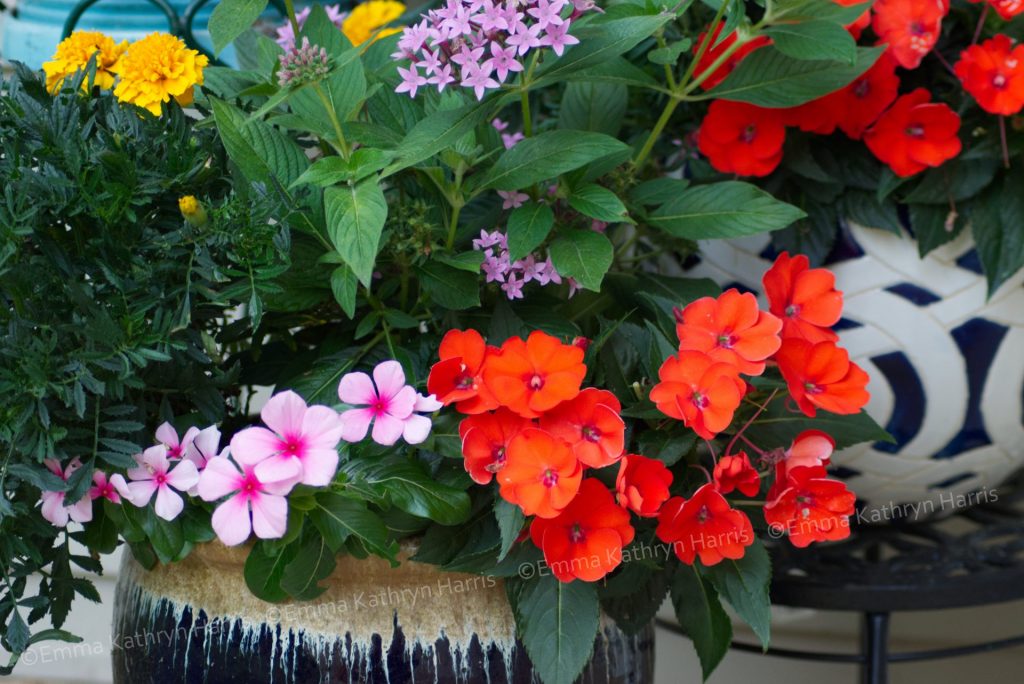
Depending on the vinca variety, they can even drop a little over the edge of the container.
The variety of vinca I generally end up with is the Catharanthus roseus, otherwise known as the Madagascar periwinkle, which blooms in the summer to fall, and grows from one to two feet tall. These generally grow in zone 10 as a perennial, but as an annual elsewhere.
Water only when necessary
Third, water only when necessary. If you’ve planted your vinca alone, watering should be low maintenance. You don’t want your flowers to go dry, so they’ll need more attention in the hotter, summer months. But overall, you could easily limit your watering schedule to a couple times a week, especially if your soil is generally moist.
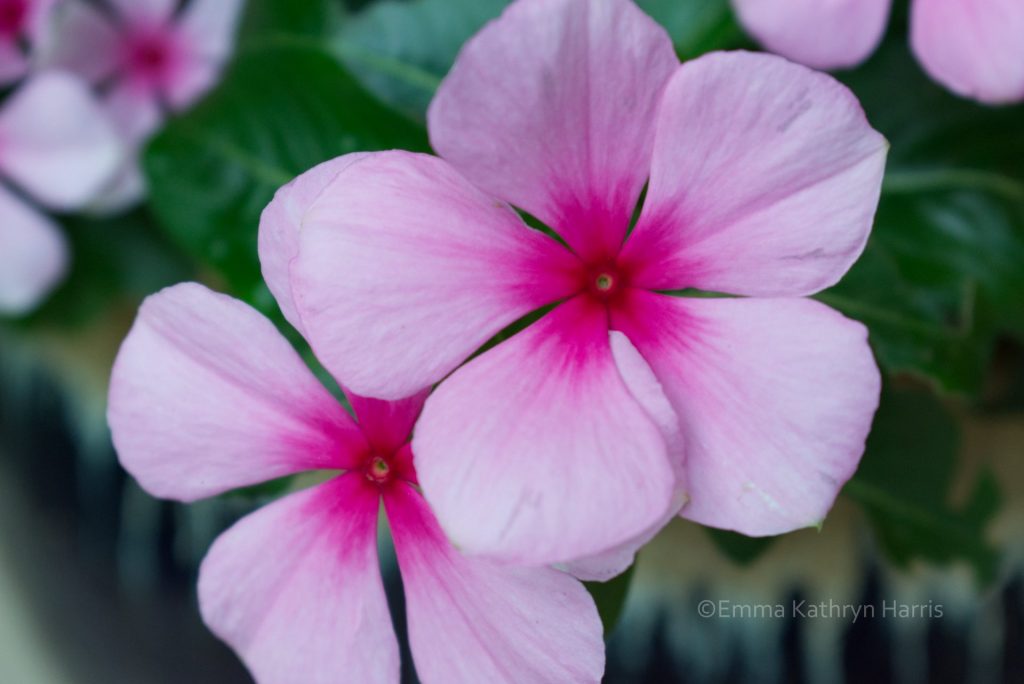
However, if you’ve planted vincas in containers, containers run dry quickly, so they’ll need a bit more attention. And if you’ve planted them with a variety of flowers, the watering needs will also vary. For a quick reference of watering and soil reminders for containers, check out my other article: “Basic container gardening made simple.”
Start small
Finally, start small. Whether you plan to grow vinca in your garden, or to use as “filler” flowers in your containers, keep in mind these delicate beauties grow en masse. You can plant four seedlings, and toward the middle to end of the season, your four will have doubled—if not tripled—in amount. Since vinca grows rather large in some varieties, it will look as a flowing, delicate blanket.
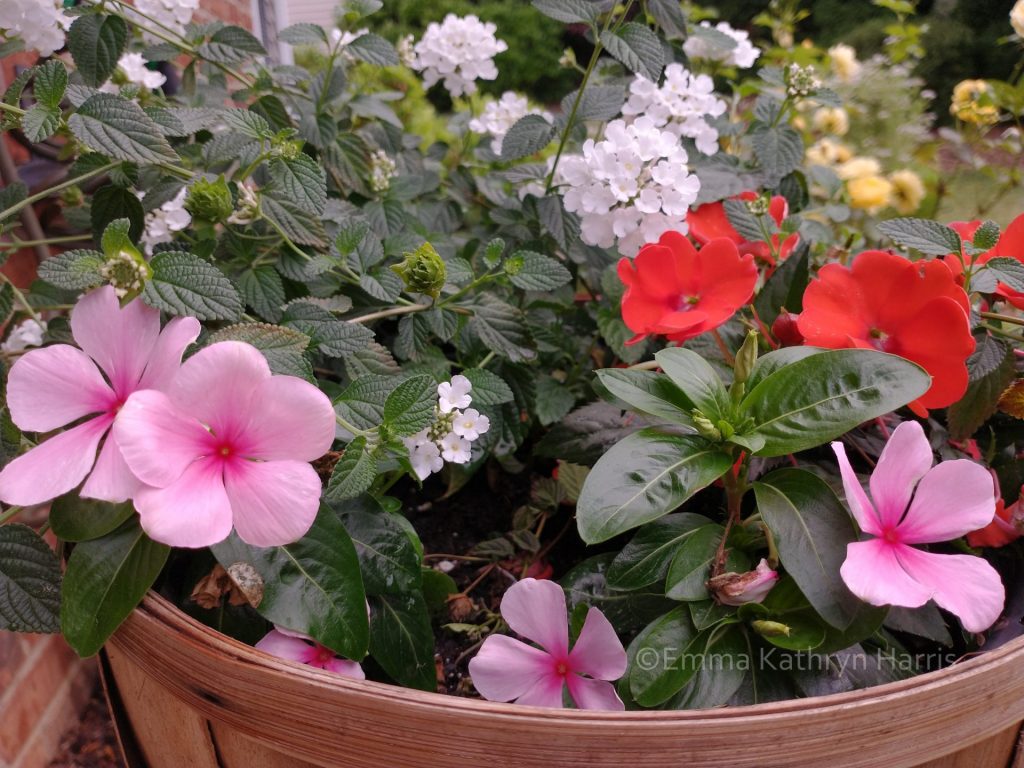
Vinca, lantana, sunpatiens 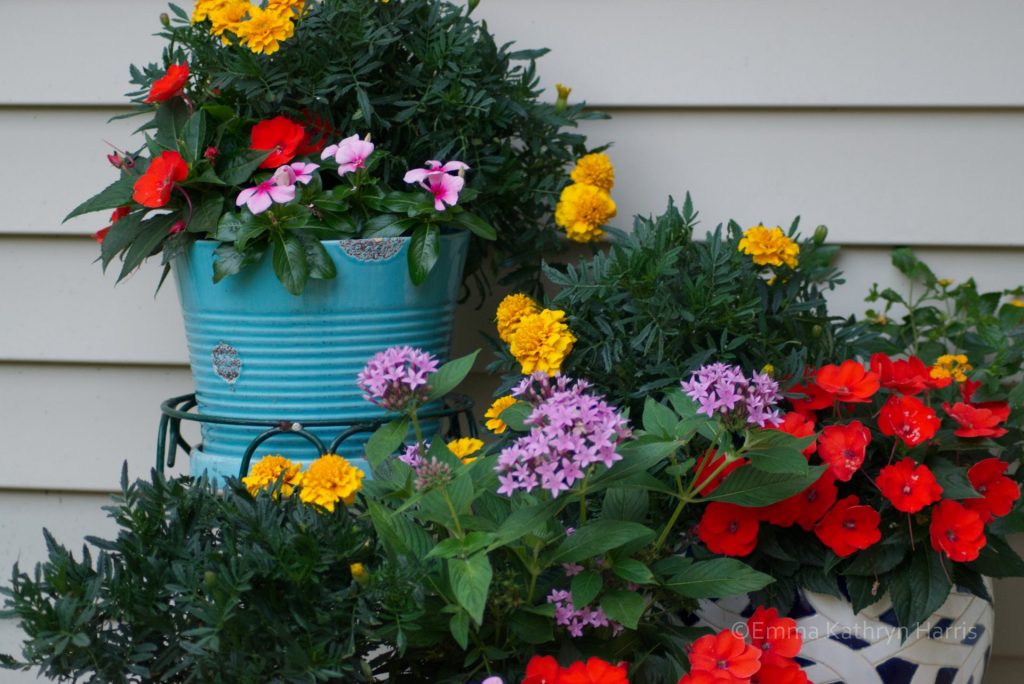
Vinca, sunpatiens, marigolds, lantana, penta
If you are in a zone where you are able to grow perennial vincas, keep in mind each year they return they will expand.
Therefore, it is okay not to buy 50 vinca seedlings because in the end, they will look like a delicate array of soft petals covering your yard.

